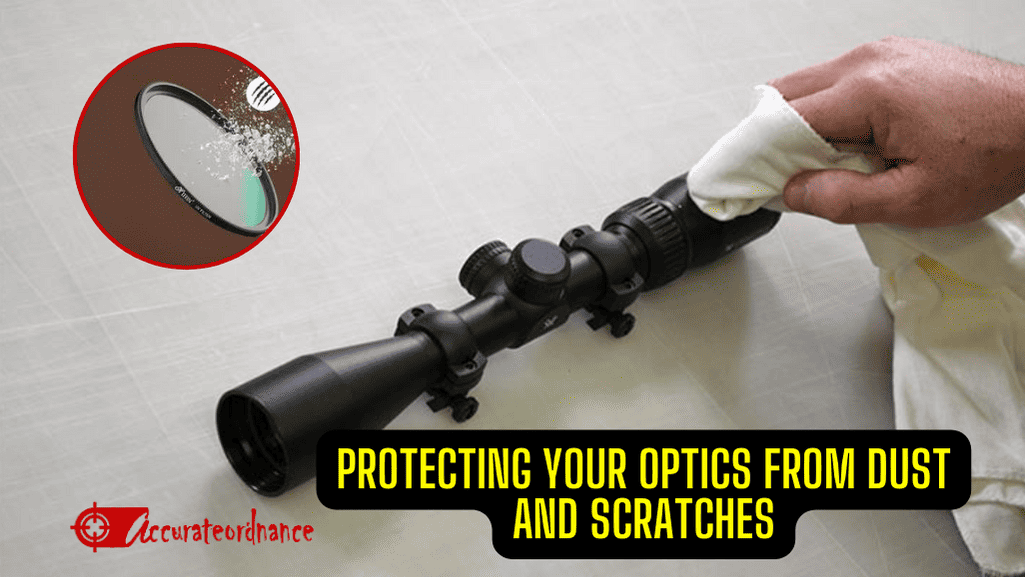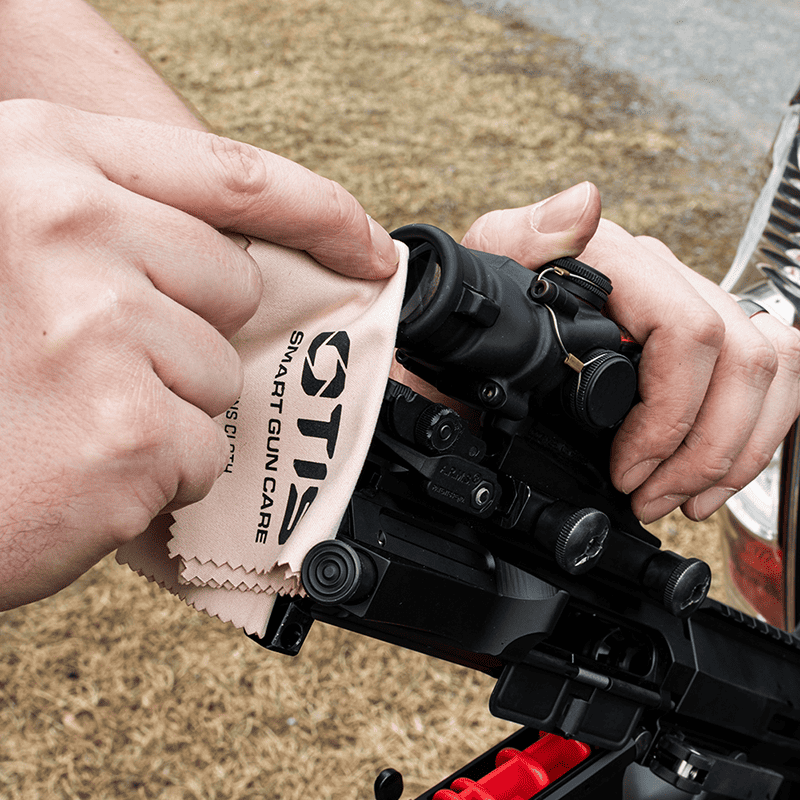Have you ever missed a crucial shot because your rifle scope failed to provide a clear view? Or perhaps you’ve marveled at the breathtaking landscapes or wildlife through your optics but noticed that dust and scratches were robbing you of the finer details? In the world of shooting sports, hunting, and outdoor observation, the integrity of your rifle scope is paramount. So, how can you ensure that your optics remain crystal clear, delivering exceptional clarity and precision every time you look through them? The answer lies in mastering the art of rifle scope care.
- Threats to Rifle Scope Clarity: Dust and Particles
- Threats to Scope Clarity: Scratches and Physical Damage
- Protective Accessories for Rifle Scopes
- Cleaning and Maintenance to Prevent Dust and Scratch Impact
- Safe Handling and Storage to Prevent Dust and Scratches
- FAQs
- Why is it important to protect rifle scope from dust and scratches?
- What are the common sources of dust in shooting environments that can affect optics?
- How do scratches on rifle scope impact accuracy and clarity?
- How often should I clean my rifle scope to prevent dust buildup?
- Can I use regular glass cleaners on rifle scope, or should I use specialized lens cleaners?
- How do I remove stubborn stains or smudges from my optics?
- Can I use compressed air to remove dust from my optics?
Threats to Rifle Scope Clarity: Dust and Particles

Sources of Dust
Shooting environments are often exposed to different sources that can generate dust and particles capable of compromising the integrity of optics. Understanding these sources is crucial for proactive maintenance and protection.
Environmental Elements
Natural elements like wind, dirt, and debris can introduce dust particles into the shooting environment. Wind can kick up dust from the ground, especially in dry or arid areas.
Firearm Discharge
Every shot fired creates a momentary burst of gas and particulate matter. This gas can contain unburned powder particles, and the heat generated can attract fine debris to the scope.
Muzzle Blast
The shockwave created by the muzzle blast can dislodge dust and particles from surrounding surfaces, including the shooting bench.
Ammunition Type

The type of ammunition used can influence the amount of residue generated. For example, ammunition with certain powders may produce more carbon fouling.
Consequences of Dust Accumulation
Dust and particle accumulation on scopes can have detrimental effects on both visual clarity and shooting accuracy. These consequences underscore the importance of proactive maintenance and protective measures.
Reduced Light Transmission
Dust particles can scatter and absorb incoming light, reducing the amount of light that reaches the shooter’s eye through the scope. This diminishes image brightness and clarity, especially in low-light conditions.
Impaired Target Acquisition
Dust on the lenses can create distracting artifacts, such as glare or streaks, which can hinder the shooter’s ability to acquire and track targets accurately.
Decreased Optical Performance
The accumulation of dust can lead to an overall reduction in optical performance, including decreased sharpness and contrast. This can negatively impact the shooter’s ability to make precise shots.
Scratch Risk
Dust particles can act as abrasives, increasing the risk of scratches when the scope is wiped or cleaned, further degrading optical quality.
Threats to Scope Clarity: Scratches and Physical Damage
Causes of Scratches on Scopes
Rifle scopes, while designed to withstand various environmental conditions, are still susceptible to scratches and physical damage. Understanding the potential causes of these scratches is crucial for preserving the optical quality of the scope.
Cleaning and Maintenance
One of the most common causes of scratches is improper cleaning. Using abrasive materials or applying excessive pressure when cleaning lenses can result in fine scratches.
Contact with Hard Surfaces
Rifle scopes can come into contact with hard surfaces, such as rocks, tree branches, or shooting benches, especially in outdoor shooting environments. Even a minor impact can lead to scratches.
Storage without Protection
Storing a rifle with a scope attached can result in the scope coming into contact with other objects in storage, potentially causing scratches.
Scope Rings and Mounts
During the installation or adjustment of scope rings and mounts, there’s a risk of unintentional contact between the scope and the mounting hardware, which can lead to scratches.
Dirt and Debris
Dust and dirt particles on the scope’s exterior or within the firearm’s action can act as abrasive agents when the action is cycled, potentially causing surface scratches.
Effects of Scratches on Optics
Reduced Image Quality
Scratches on the lenses can scatter incoming light and create distortions, reducing the overall image quality. This can result in reduced clarity, contrast, and color accuracy.
Glare and Flare
Scratches can introduce glare or flare when light hits them at certain angles. This glare can be distracting and interfere with target acquisition, especially in bright conditions.
Vulnerability to Moisture
Scratches can compromise the integrity of lens coatings, making them more susceptible to moisture and fogging, further hindering visibility in adverse weather.
Permanent Damage
In some cases, deep or extensive scratches may be irreversible, requiring the replacement of the affected lens or the entire scope.
Protective Accessories for Rifle Scopes

Types Of Lens Covers
When it comes to safeguarding the delicate parts of your scope, protective accessories play a pivotal role. Two common types of protective accessories are lens caps and covers, each designed to shield specific parts of the scope.
Objective Lens Covers
Objective lens covers are protective caps specifically designed for the front or objective lens of your scope.
Eyepiece Covers
Eyepiece covers are protective caps designed for the eyepiece or ocular lens of your rifle scope. As objective lens covers, they come in various styles to cater to different preferences and usage scenarios:
Flip-up Caps: These are hinged caps that can be flipped open or closed. They attach to the lens of the scope and provide quick access to the lens when needed. When closed, they provide a protective barrier against dust, dirt, and impact.
Snap-On Cover: These covers are designed to snap securely onto the lens. They offer robust protection against scratches and dust.
Cleaning and Maintenance to Prevent Dust and Scratch Impact

Proper cleaning and maintenance of your optics are fundamental to ensuring their longevity and optimal performance. Dust and scratches can compromise your scope’s clarity, but by following these best practices, you can protect your investment effectively:
Microfiber Cloths and Lens Cleaning Tissues: These soft and lint-free materials are ideal for gently wiping the lens surface. They won’t scratch or damage the delicate coatings on the lens.
Lens Cleaning Solution: Opt for a specialized, alcohol-free lens cleaner designed explicitly for optics. Avoid using household glass cleaners, as they may contain chemicals that can harm lens coatings.
Lens Brush or Blower: Before cleaning, use a lens brush or blower to remove loose dust and particles. This step helps prevent abrasive particles from scratching the lens during the cleaning process.
Safe Handling and Storage to Prevent Dust and Scratches
Treat Your Firearm and Scope with Care: Always handle your firearm and attached scope with the utmost care. Avoid unnecessary impacts, knocks, or rough handling that could result in scratches or damage to the optic.
Cautious Scope Ring and Mount Handling: When attaching or adjusting scope rings and mounts, exercise caution to prevent any contact between the scope and the mounting hardware. Even minor contact can lead to scratches or misalignment.
Store with Covers: When storing your rifle, ensure that it is always stored with the scope covers in place. This simple yet effective measure helps prevent dust and contaminants from settling on the lens surface during periods of inactivity.
Use Padded or Hard Cases: If possible, store your rifle, complete with the scope, in a padded or hard case designed for firearms. These cases offer superior protection against physical damage, dust, and moisture, minimizing the risk of scratches or other harm.
FAQs

Why is it important to protect rifle scope from dust and scratches?
It is important because dust and scratches can make your scope less clear, like a dirty window. This can make it harder to see your target and shoot accurately.
What are the common sources of dust in shooting environments that can affect optics?
Common sources of dust include wind blowing dirt, the dust and debris created when you shoot, and even dirt from the ground or plants around you.
How do scratches on rifle scope impact accuracy and clarity?
Scratches on the scope’s lens can make your view blurry and can change where your bullet hits. It’s like having a scratch on your glasses – it affects what you see and how well you see it.
How often should I clean my rifle scope to prevent dust buildup?
You should clean it before and after each time you go shooting to keep dust from building up and affecting your view.
Can I use regular glass cleaners on rifle scope, or should I use specialized lens cleaners?
It is better to use specialized lens cleaners made for optics. Regular glass cleaners might have chemicals that can damage the lens coatings.
How do I remove stubborn stains or smudges from my optics?
Use a gentle circular motion with a soft cloth and a bit of cleaning solution. Avoid rubbing too hard to prevent scratches.
Can I use compressed air to remove dust from my optics?
Yes, but use it gently. Too much pressure can push dust around and potentially scratch your optics.

Mike Hardesty is a published freelance gun writer. He also possesses specialized expertise in rifle scopes With dozens of articles and reviews published in Pew Pew Tactical, Snipercountry.com, and TTAG (The Truth About Guns), Mike is considered a firearms expert. His special area of expertise is handguns.
Mike is a long-time shooter. He has been punching paper targets, taking deer and other game and shooting at competitions since about 1975. Other related pursuits include reloading and bullet casting. He currently reloads for over 10 calibers, both handgun and rifle. His reloads, particularly for 9mm, were in great demand during the height of the ammo shortage among family and friends. He donated hundreds of rounds to informal shooting sessions. He was quoted as saying “I do not sell my reloads but I sure will help my guys shoot ’em for free!”. He has a few cherished firearms that he has inherited or otherwise procured — those are his favorites.
He earned B.S. and M.S. degrees from Indiana State University in 1974-1975.
He’s a firearm experts and is the founder of mhardesty.com.
